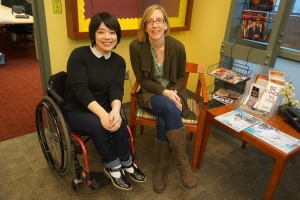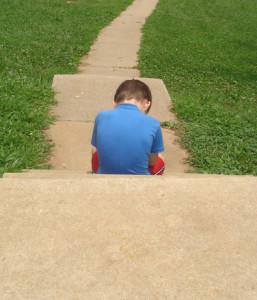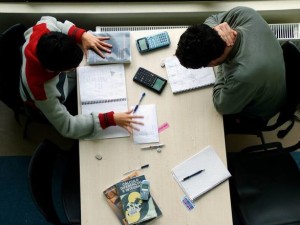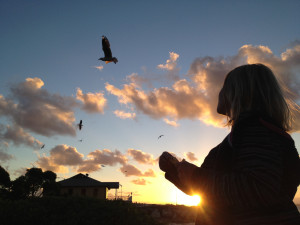This article is also available in: 日本語

To know more about the education for people with disabilities in the U.S.,
I visited Dr. Kristen McMaster, a program coordinator of special education at University of Minnesota.
Kristen has been in special education field all through her undergraduate to graduate training at Vanderbilt University.
After graduation, she taught students with a wide range of disabilities from mild to fairly severe and profound level in a high school.
A couple years later, she went back to Vanderbilt University to get her Master’s degree in special education technology.
During her research, she met Prof. Doug Fuchs and got involved with a lot of his research related to learning disabilities (LD) and academic related difficulties.
In the doctoral program, she spent efforts on a program called Peer Assisted Learning Strategies (PALS), which is a peer tutoring program that is designed as an inclusive general education approach to accommodate a lot of kids with disabilities or academic difficulties.
Now she has been working on developing Curriculum-Based Measure (CBM), which is a measurement system monitoring students’ progress frequently and translating the data to graphs for analysis.
One of her important jobs is to train teachers who actually use the system to make decisions to help students.

During the interview, she taught me about Least Restrictive Environment (LRE).
In special-education law in the U.S., students with disabilities are guaranteed “Free and Appropriate Public Education”.
LRE is defined basically creating learning environment as close to students without disabilities as possible but also in a way that meets student’s needs.
For many students, LRE is fully included in the general education classroom.
Especially for students with physical disabilities, a lot of them are deaf, hard of hearing, blind or visually impaired students, to receive their public education in the regular classroom with necessary supports for them to achieve academic success.
For students with LD or other disabilities, which affect their academic performance greatly, being in the regular classroom may not be helpful for those students to meet their academic needs.
When they’re struggling with a particular academic skill, and the classroom teacher doesn’t have the necessary time or knowledge to meet those students’ specific academic needs.

In Japan, as I have mentioned some education issues in Japan in this blog before, many students with disabilities are assigned to a segregated class just for students with various kinds of disabilities or go to a special education school.
I have asked some professors from Japan who has researched about children with disabilities if LRE is known in Japan.
There are some researchers and professors brought this concept to Japan but it didn’t really penetrate eventually.
I wonder what the bottleneck was?
I think this helps to create inclusive education environment.

She also explained the main difficulty that students with LD have faced in education.
Some of them go on to higher education and become successful there.
However, the issue is that a lot of them drop out at high school (In the U.S., high school is compulsory education).
They could get a job still, but it is very hard for them to compete with other people to develop their good career without the diploma.
It is also not easy to earn the same amount of salary as other people do.
She also said that a person with LD living in poverty has other risk factors that they’re more likely not to finish a high school or to go on post secondary.

LD is now one of the major disabilities that people have today.
It is happening in Japan too.
The disability is not visible, so many people wouldn’t notice.
However it is said that there are 2 to 3 students with developmental disabilities including LD in one classroom.
We have to figure out the ways to support those students to continue studying and being integrated to the society like everybody else.
Kristen advised that early intervention is really important.
I really believe that the early intervention should involve not only family but also school, community,
and society because those children would lead in a family, school community and our society when they grow up.
